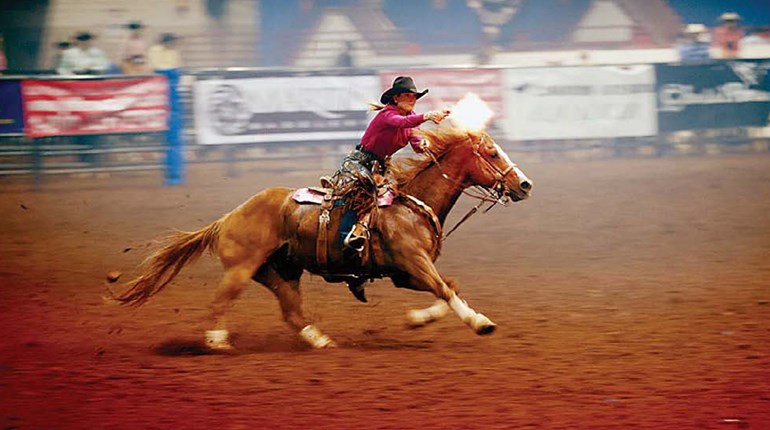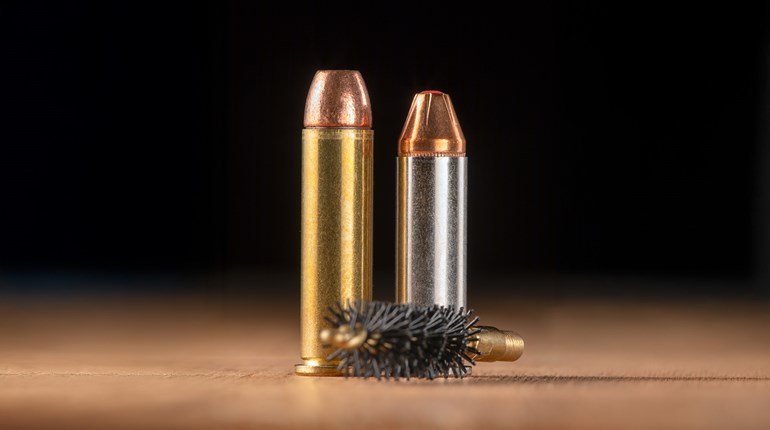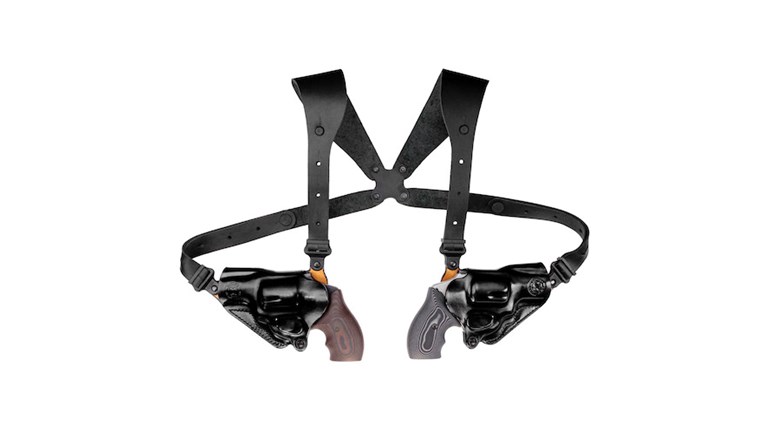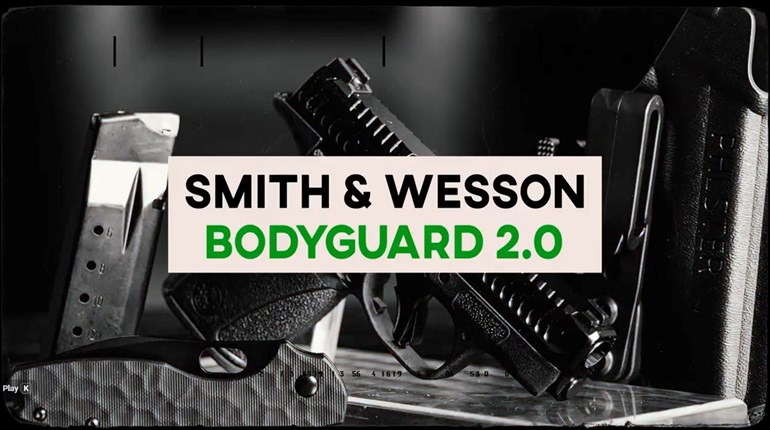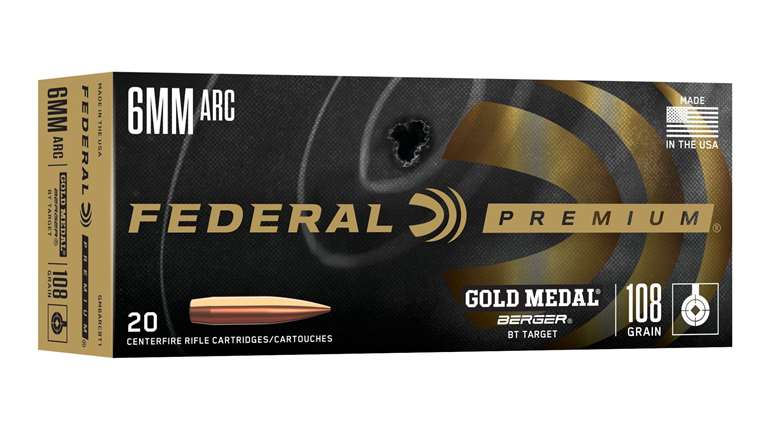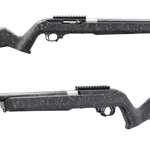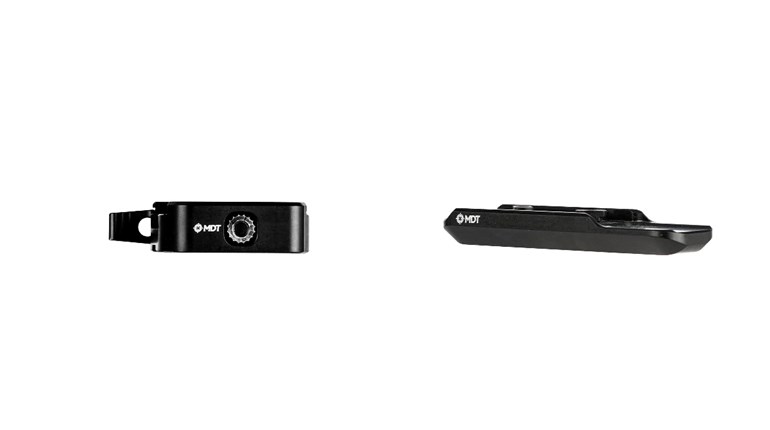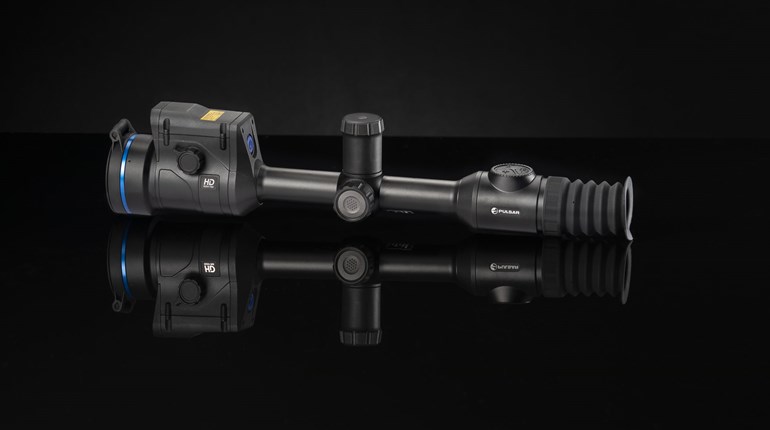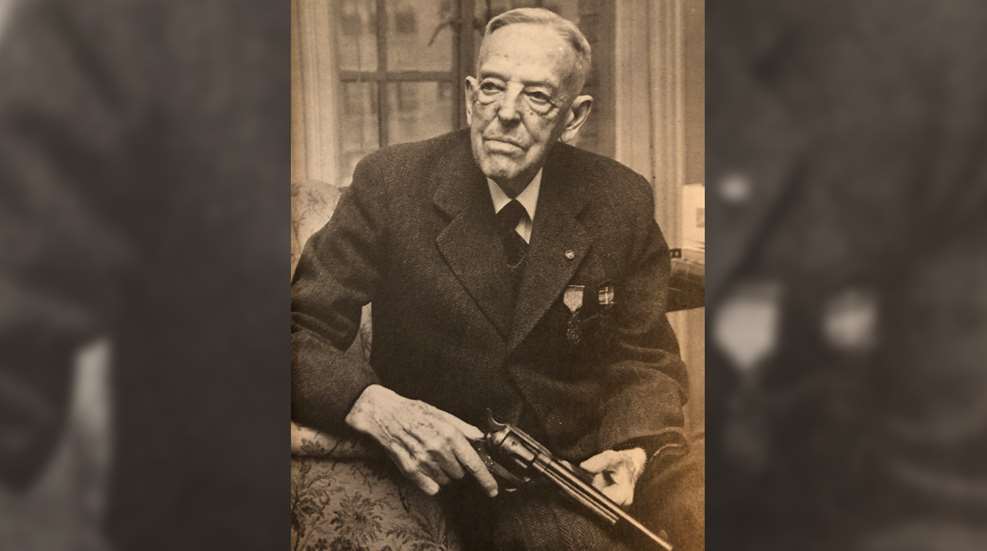
The below is an excerpt from the 1978 book, Olympic Shooting, written by Col. Jim Crossman and published by the NRA. Read Part 1 and Part 2.
1920—Antwerp: Everything But The Kitchen Sink (Part 3)
By Colonel Jim Crossman
In the free rifle events, the American team once again knew that they would be outgunned. These events were favorite European matches and over the years a special rifle had been developed especially for the three positions: standing, kneeling and prone. The free rifle was not popular in the U.S. and was not made here.
This descendant of the Schuetzen rifle differed from the Springfield Service rifle in many ways: long barrel, long sight radius, great weight, palm rest, adjustable buttplate, set trigger and other factors. These differences and the superiority of the free rifle for this game came as no surprise, since the Americans had consistently been outgunned in the Olympic and other international free rifle matches almost from the first. A token effort was made to improve things this year, and some Springfields were equipped with set triggers. Lee and Osburn both shot the special rifles. But Sgt. Morris Fisher disdained this fancy work, and shot a Service rifle.
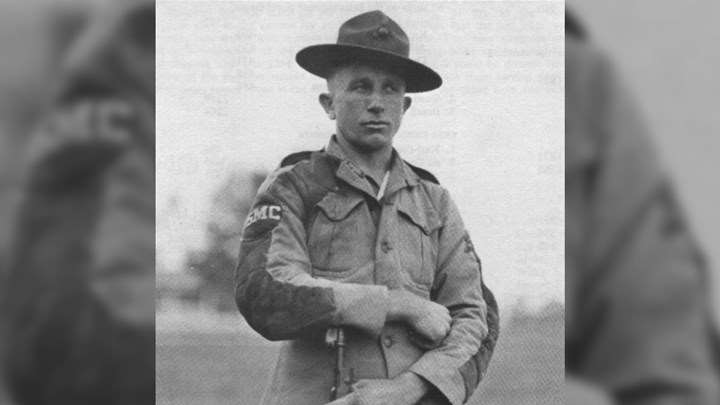
How badly the American team was outgunned in the free rifle events is shown by the fact that they won the team match by only 35 points. The story is not really quite that simple, though. In past free rifle events, the positions had been standing, kneeling and prone. Kneeling was not a position that was very popular in the U.S., and the American shooters had trouble shooting top scores in this bone-breaker. But in the 1920 rules, perhaps by inadvertence, the positions were specified as standing, prone and "kneeling or sitting." This was another story. One of the standard American positions was sitting and the Yanks took to it like a duck to water. Shooting sitting in this "kneeling or sitting" stage while most of the others were shooting kneeling, the U.S. team was 150 points ahead of any other team.
With their scores counting both for team and individual standing, Osborne's 380 tied him for third in the individual, but he was outranked by a Norwegian. Using his Service rifle and the Remington 180-grain ammunition, Fisher turned in a tremendous sitting score—higher than any of the American prone scores—for a 996 total and the gold medal. Although Fisher was an experienced shot and appeared to be cool and calm, he could get worked up, and he played the violin for relaxation. While his teammates often made caustic comments about his fiddling, there was one time when they would have been glad to hear it—or to hear anything but moans from his firing point. After getting off a couple of good sighters in the standing position to start off the team match, Fisher got the "buck" and couldn't get off the first shot for record. For 20 minutes he struggled and fought, trying to get it off. Finally the coach ordered him to shoot the rifle—it didn't make any difference if he hit anything or not, just shoot the rifle. Fisher grabbed a handful of trigger the next time the target swung by and managed to get off a shot, wide but in the scoring rings. With the spell broken, he went on to shoot the winning score.
While the free rifle events were fired on the familiar, tough, international target, the Army rifle events used the Belgian ring target. It seemed strange to hear the Americans cussing out a string of fives, but they did, since the Belgian target had a 6-ring on it. With a center ring diameter of about 1 foot at 300 meters and 2 feet at 600 meters, these targets were difficult. Printed on dark brown paper, they were hard to see and it was difficult to distinguish the black bullseye, especially when the sky clouded over and the rain fell, as it did practically every day.
On the day of the Army rifle events, the shooters were busy, the schedule calling for 300-meter standing team and individual matches, 300-meter prone team and individual matches, 600-meter prone team and individual matches, topped off with the 300-meter and 600-meter prone team match. Five men were allowed in the individual events and 5-man teams were specified in the team events. Of the Americans who shot both team and individual matches, all fired separate scores for each. Lt. Lloyd Spooner and Cmdr. Willis Lee kept themselves occupied, as they both shot in all seven matches on that day.
In the 300-meter standing team match, the Americans got off to a slow start and were surprised by Denmark, who won the gold with 266, to the U.S. score of 255, with Sweden earning third by virtue of its 255. Osburn picked up three points in the individual match over his team score and was top man with a score of 56. Madsen of Denmark was second, one point behind. Nuesslein dropped a couple of points from his team score, and found himself in a four-way tie for third with 54. Shooting in the rain, he turned in a fine 56 for the bronze medal.
In the prone team match at 300 yards, the U.S. was winner by six points over France and eight points over Finland. The U.S. scores were not as good in the individual prone event at 300 meters, and Olson of Norway, Johnson of France and Kuchen of Switzerland gathered the hardware.
At the 600-yard prone firing line, Spooner turned in a 59 to put him in a three-way tie for the individual award. In the shoot-off, Johansson and Erickson of Sweden beat Spooner and he had to settle for third.
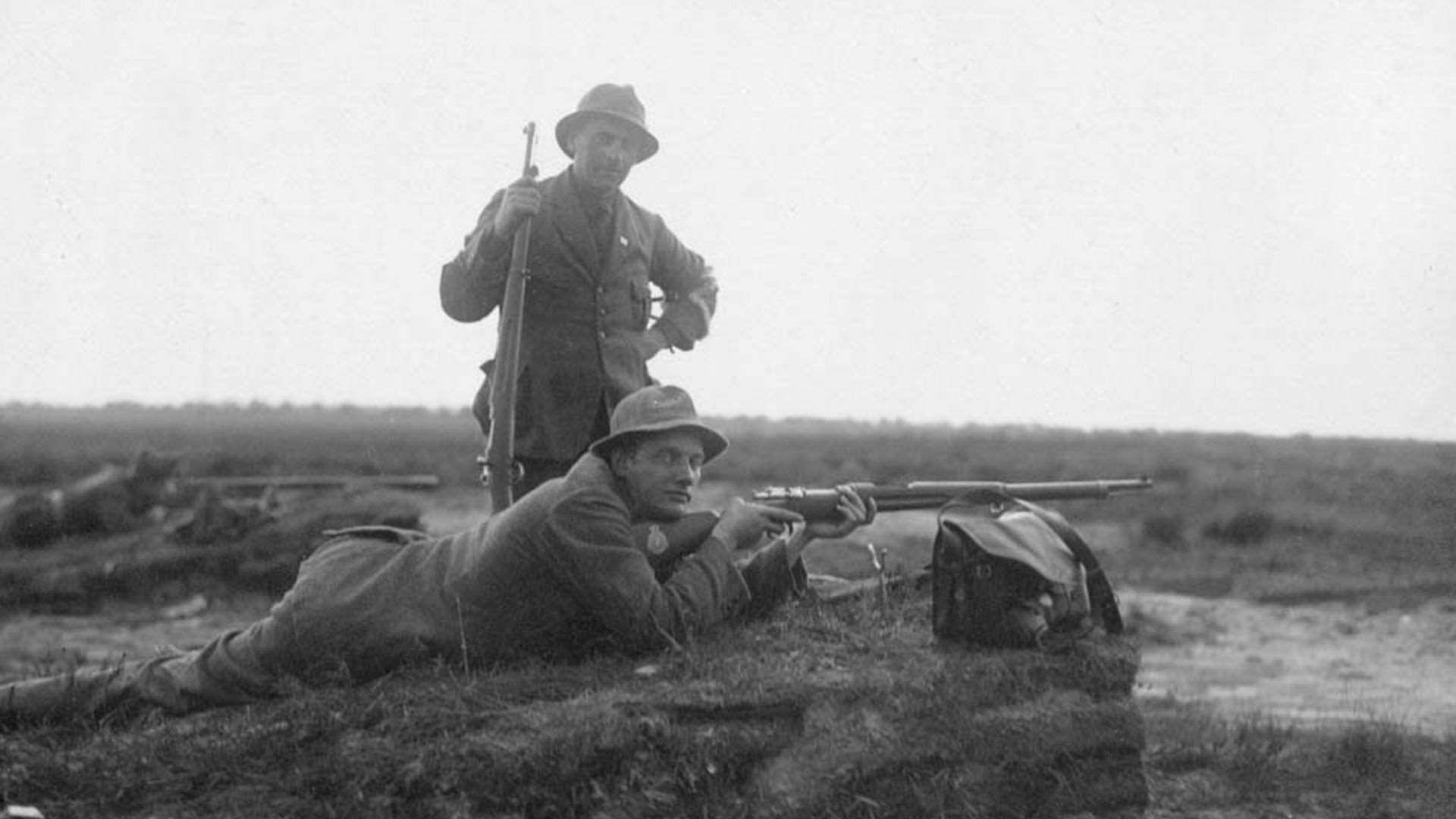
This appeared to be the range for ties. At the end of the team match, South Africa and Sweden appeared to be tied for first, with the U.S. a point behind. But a recheck of the targets gave Dennis Fenton a possible instead of a 59, which additional point threw things into a three-way tie.
Following the shoot-off the next day, South Africa was given 283, U.S. 282 and Sweden 275. That being the end of things for most of the Americans, they packed their rifles away. Late that night a careful examination of the targets resulted in the range committee again giving the U.S. a point and a tie with South Africa. In the next try at settling the thing, the U.S> turned in a 284, while the South Africans had only a 279.
The U.S. method of scoring is to indicate the value of the shot from the pit with a colored paddle and put a spotter in the shot hole. After the second shot, the process is repeated, with the spotter being moved to the new hole and the old bullet hole being covered by a paster and gone forever.
In the international system, the shot is usually given only an unofficial marking in the pits and the target is removed from the frame at the end of a string. All the shots are later scored in the statistical office by a special jury. The preliminary pit scoring and the final scoring may vary by a point or more either way.
Statistical office scoring was almost a necessity at Beverloo, since the targets were fastened on fixed frames. U.S. targets were fastened to frames that slid up and down, like a window sash, so that the target could be brought into the pit and carefully examined after each shot.
At Beverloo Camp, the frames were fixed. Instead of using spotters to indicate the location of the shot, the markers in the pits pointed out the shot hole with a triangle on the end of a long staff. The area around the shot hole was then swabbed with a paste brush, also on the end of a long staff, and a paster on the back side of the brush was then slapped against the target. While the system was fast, it was obvious that the markers in the pit could not always tell the value of a doubtful shot.
The final team match was the one the rifle shooters wanted the most. With a five-man team and 10 shots prone per man each at 300 meters and 600 meters, the highest possible score was 600. Having a low individual score of 55 and a high individual score of 59, the Americans shot uniformly well, for a team total of 573, eight points ahead of Norway and 10 points up on Switzerland.
Ranges for the pistol shooting were strictly improvised. Portable frames were stuck in the ground between the high mounds separating the rifle ranges. The Americans had learned that the wind picked up throughout the morning until about noon and held fairly steadily throughout the afternoon. They also learned that no matter where they put the firing line and no matter which direction the wind was blowing, the six-foot embankments between ranges did not offer much protection.
In the revolver match, shot on the international 50-meter target at 30 meters, the conditions called for military revolvers. Some of the U.S. team used the Colt Army Special and the others the S&W Military and Police model, both chambered for the .38 Spl. cartridge and both with fixed sights. Team and individual match scores were fired separately, team scores first. Most of the teams were scattered far down the range, and it was not until late in the afternoon that the U.S. shooters learned how the others did. The Brazilians, however, were just on the other side of the mound. The Americans were somewhat distressed to see them step up to the firing line with S&W revolvers having adjustable sights, either holding off or filing them to fit. But it seemed that the Brazilian Navy issued this revolver, so they had a right to use it.
However, the fixed sights did not seem to worry the U.S. shooters, as the team score of 1310 was 25 points ahead of the Greeks and 40 points over the third-place Swiss.
As the individual match was underway, it was learned that a Brazilian, Paraines, had already finished with a 274, considerably better than any of the U.S. shooters had done in the team match. A hasty look at how the Americans were doing in the individual match showed that only Bracken had a chance to beat him on the last string, and it would take a hard-to-get 94 to do the job. Bracken started out as if he had every intention in the world of doing the job, with two 10s and two nines. But a low hold combined with poor sight alignment broke things up with a six. He recovered himself with two 10s and three nines, to end with 272 and the silver medal, three points up on the Swiss, Zulauf in third place.
The U.S. 50-meter team match go off to a frustrating start. Having learned the vagaries of the wind at Beverloo, they decided to shoot the 50-meter affair early in the morning before the wind could get to work. The match was scheduled for 8:00 a.m., and the Americans were there, ready to go. About 9:00 a.m., the range officer casually strolled out and by 9:30 a.m. the shooting finally got under way. The only other team shooting nearby was the Brazilians, just on the other side of the high embankment.
After the U.S. team was about a quarter of the way through their 60 shots per man, someone noticed that things did not seem the same on the other side of the ridge. A little investigation showed that the Brazilian targets were 45 meters from the firing line, while the U.S. targets were 54 meters away. This hardly seemed the way to run a shooting match. After considerable measuring and heated discussion, it was decided that the Brazilians would have to start all over again. The Americans, since they had been shooting at a longer distance than required, could stand on the scores already fired or they could shoot over.
They chose the latter course, a tactical error. By this time the wind was in full vigor and this combined with the mental disturbance of the late start and the hassle over the distance to hurt the Americans. By the time the U.S. shooters were a quarter-way through the event again, they had dropped 32 points from their first try, despite the shorter distance.
While most foreigners were using free pistols with long barrels, fancy grips, set triggers and other refinements, the U.S. team was split, some using the old stand-by Smith & Wesson break-open, single-shot .22 pistol, while others used a new Colt pistol. The Colt was made on the frame of the .38 revolver but with a block of steel in place of the cylinder. The steel block held a .22-caliber barrel and the assembly swung out to the left for loading, like its parent revolver. A few years later, this pistol was marketed as the Colt Camp Perry model, one of the better handguns of the time.
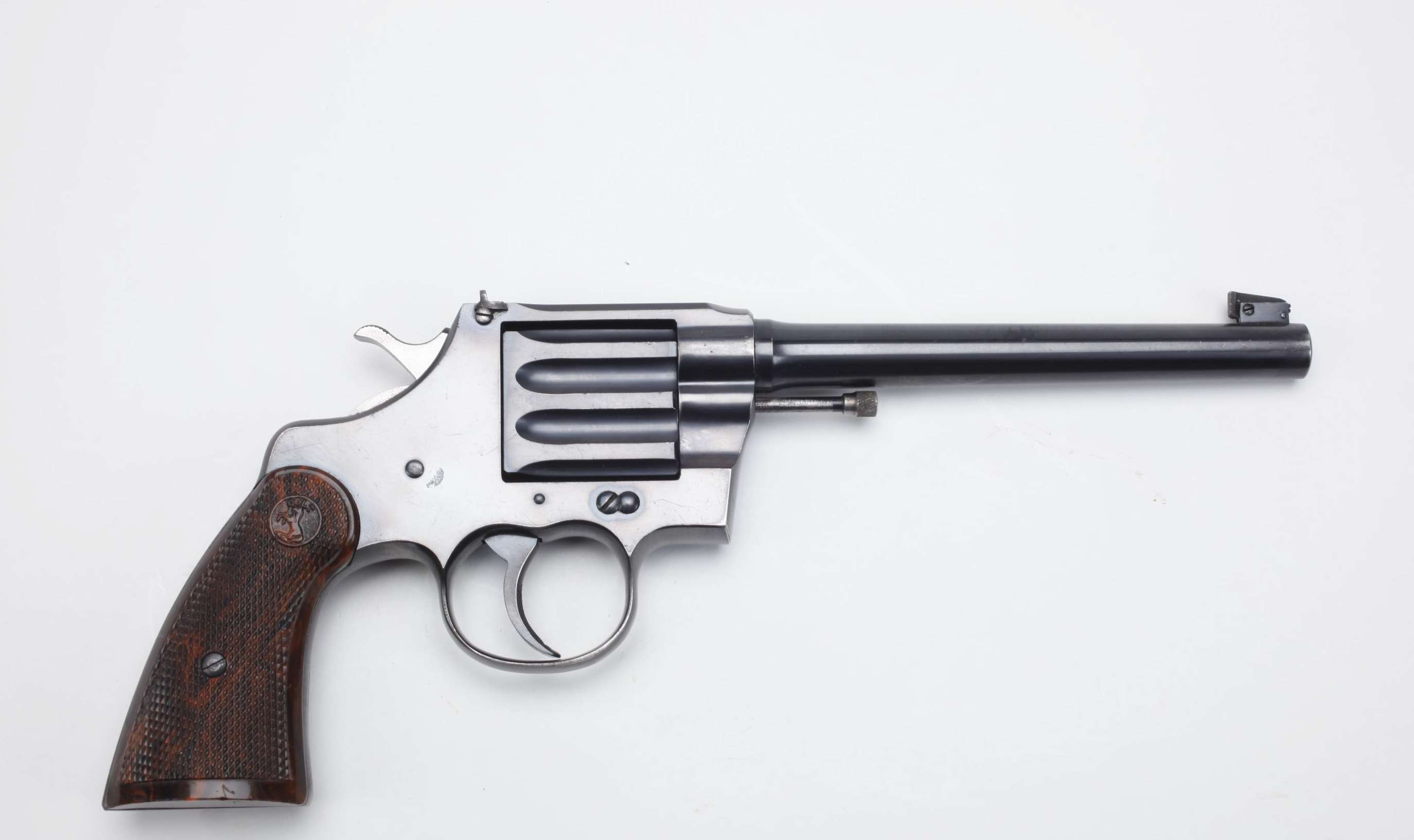
The Brazilian team had very poor equipment for the 50-meter match, so the Americans took pity on them and lent them one of the new Colt .22s. Four Brazilians shot the gun in the team match and beat their average scores by something like 20 points a man, getting them a third-place finish in the match. Da Costa, of the Brazilian team, using the borrowed pistol and some UMC ammunition he borrowed, from Lane in the individual match, ungratefully proceeded to trounce practically all the American shooters for a silver medal.
Although the U.S. team got off to a slow start in the second try at 50 meters, they ended with a team total of 2372, well ahead of the 2289 shot by Sweden and the 2264 of Brazil. Some of the shooters elected to have their team scores count in the individual match, and no one was able to come close to the 496 turned in by Karl Frederick. Da Costa's 489 was next, with Lane adding another Olympic medal to his 1912 haul by a 281 for third place.
Although the shotgun program had called for two eliminations, the team captains decided to have only one, and that only after half the program had been shot. This half was shot in four stages of 10 birds, 10 birds, 15 birds and 15 birds per man, each stage in the continuous-fire system. At this halfway point, three countries were eliminated and the remaining 50 birds per man were fired in three stages, 20 per man and 20 per man continuous fire, and 10 per man unknown trap, unknown angle. This last stage was a tough one, as only one man was on the line at a time, and a bird could be thrown from any one of the 15 traps. Of the seven stages, the Americans were tied for high in one, but led all the rest, to give them a 547 total and the gold medal—well ahead of Belgium's 503 and Sweden's 500.
The individual match allowed five entries per nation and the U.S. put in Arie, Troeh, Wright, Bonser and Plum. This match was over the same course of fire as the team match, except that the last stage was a bit easier. Two men were up, one on the No. 2 firing point and one on No. 4. The man on 2 could be thrown birds from any of the traps serving pegs 1 to 3, while the other man got birds thrown from traps serving pegs 3 to 5. Ties were broken by counting the number of times the shooters broke a bird with his second shot, the man with the fewest breaks on the second try winning. This method was used to break the tie for third place, as Arie broke 95, Troeh 93, and Wright, Plum and Bonser each 87. The other shooters? They followed after the five Americans.
When the Americans got all dressed up in their official Olympic uniforms of blue coats with a U.S. shield on the left pocket, white trousers and straw hats, they looked sharp. But when they tried to carry away their awards, they looked like pack mules. In the team events, the trapshooters had won their event, the pistol shooters had won both their events and the rifle shooters had taken first place in five events, second place in one event and third place in one event—being skunked in only one of the eight team matches.
In the individual matches, the shotgunners took all three places in their match, while the handgunners took a gold and bronze in one and a silver medal in the other. The riflemen in individual matches won three firsts, one second and three thirds.
With a total of 10 medals, mostly gold, in the team matches and a total of 13 medals in the individual matches, five of them gold, it did seem that the U.S. team took home just about everything but the kitchen sink!
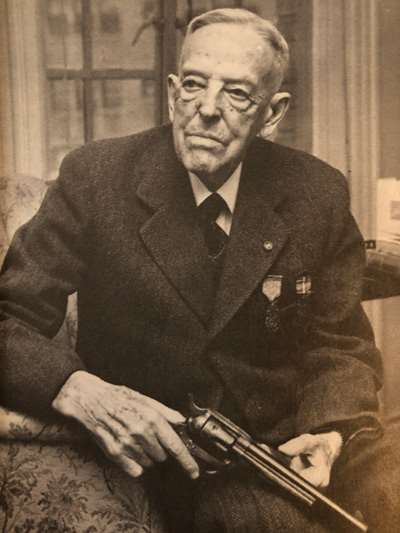
Photo: Brig. Gen. George C. Shaw was captain of the 1920 rifle team.
Read more: A Swiss Schuetzenfest: The World’s Largest Rifle Match













